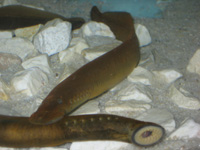Nobels explained
UD faculty members discuss 2013 prize-winners at annual symposium
Today’s chemists might work at a computer as often as in a laboratory, medical researchers studying conditions such as diabetes rely on understanding how cells carry and deposit materials within the body, and average investors in the market increasingly buy index funds to average out the short-term ups and downs of individual stocks.
The discoveries that led to these changes are among the work that was honored by this year’s Nobel Prizes. (more…)

